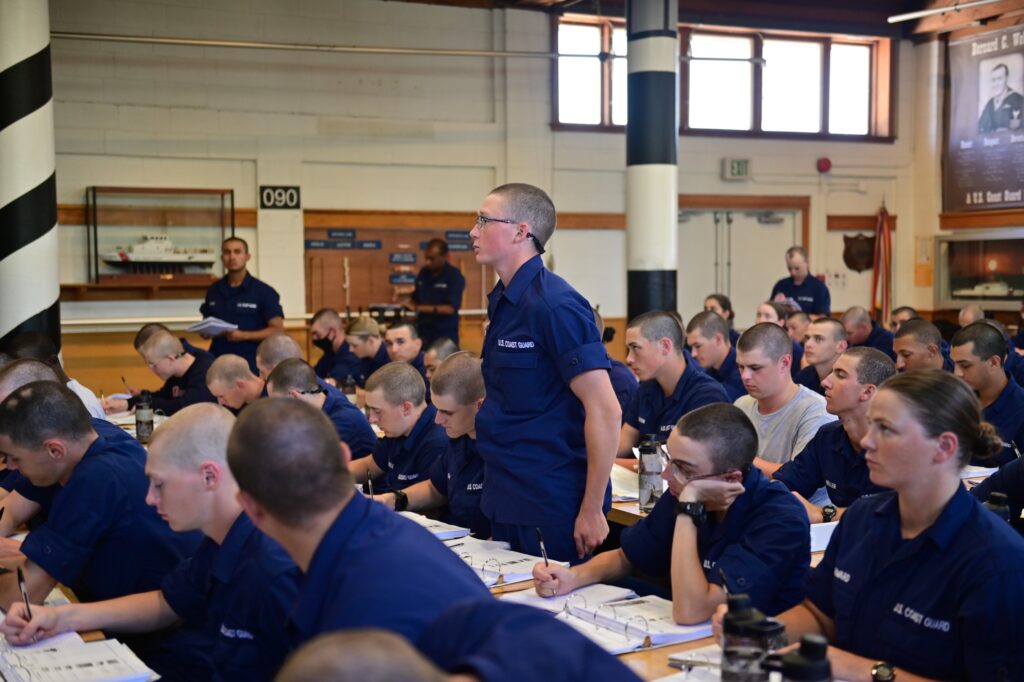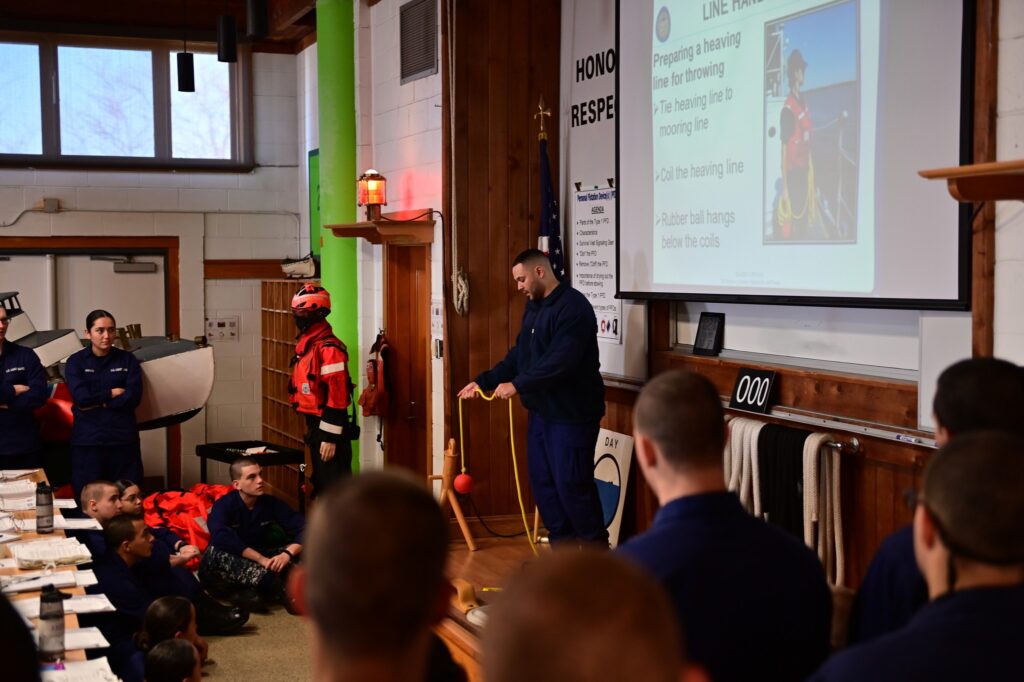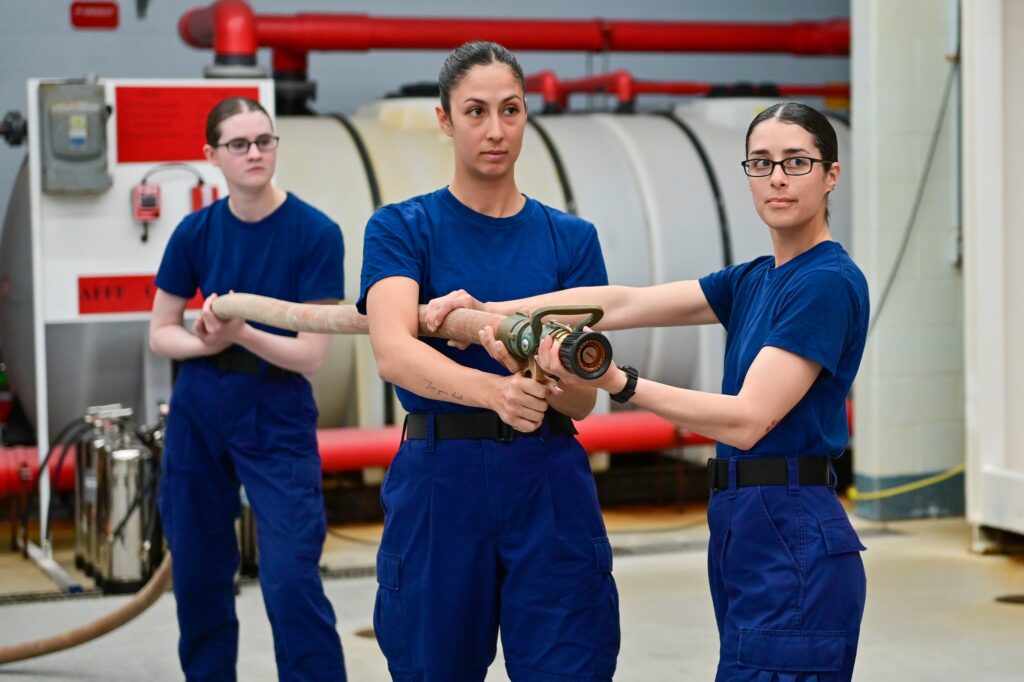Sea Life
“Maritime Duties ”
As Week 3 unfolds at Training Center Cape May, recruits fully immerse themselves in understanding the varied roles and critical missions of the Coast Guard. Through hands-on learning and practical exercises, they begin to grasp the breadth of responsibilities they will take on, both on and off the water. This foundational knowledge sets the stage for their future in the fleet, preparing them for the diverse challenges they will face as Coast Guardsmen.

Maritime Operations
The Coast Guard operates with a unique blend of military, humanitarian, and civilian law enforcement responsibilities. This week, Recruits will focus on three core areas of Coast Guard operations: maritime safety, security, and stewardship.
- Maritime Safety: Recruits will learn about protecting lives and ensuring safety on U.S. waterways. This includes enforcing marine safety regulations, responding to emergencies, and assisting with search and rescue missions to save those in distress.
- Maritime Security: Training will cover enforcing federal laws and treaties at sea. Recruits will be introduced to intercepting illegal drug shipments, defense readiness, managing migrant interdictions, and safeguarding America’s ports, waterways, and coastal areas against threats.
- Maritime Stewardship: Recruits will gain knowledge on preserving natural resources and the marine environment. This involves understanding fisheries management, marine environmental protection, ice operations, and aids in navigation, ensuring safe passage for vessels while protecting marine ecosystems.
This combination of skills prepares Recruits to take on diverse roles, from law enforcement on the water to environmental stewardship, ensuring they are ready to uphold the Coast Guard’s mission of safety, security, and protection of natural resources.

Knot Tying Techniques
After completing their training on water-related duties, recruits will shift to learning practical skills essential for their work in the fleet. They’ll first dive into the types and parts of a line, the long rope used to secure a boat to the dock. These components—bitter end, bight, turn, round turn, and standing part—are fundamental to mastering maritime operations.

Fire Safety
Lastly, your recruit will be introduced to fire safety procedures and firefighting terminology, including how to effectively extinguish fires on cutters—the term the Coast Guard uses for its ships. This training is essential for ensuring safety at sea, where recruits learn to respond to fire emergencies quickly and efficiently, safeguarding both the crew and the vessel.
In your letter to your Recruit this week, consider asking them what they found most interesting about their lessons on Coast Guard duties. It’s a great way to stay engaged and show your support during this pivotal time.
This week is also perfect for sending a CGX gift card. The Coast Guard Exchange (CGX) offers tax-free shopping to Coast Guard personnel, families, and authorized patrons, with products ranging from uniforms to electronics. Profits directly support Morale, Well-being, and Recreation (MWR) programs, enhancing the quality of life for service members. CGX stores, both on and off base, ensure accessibility and reinvest proceeds into community services to boost readiness and retention.
As you go through the letter-sending process on our app, you’ll see an option to add a gift card. It’s a simple way to provide your recruit with the extra support they might need, helping them stay prepared and focused throughout their training.
Stay tuned for next week’s update, where I’ll share more insights and stories as your Recruit progresses through more firefighting training—a crucial part of their journey. You won’t want to miss it!
Semper Paratus,
SgtMaj Paul Davis (USMC Ret.)
